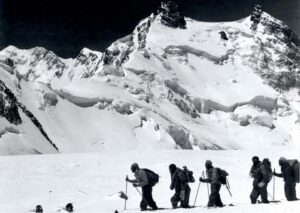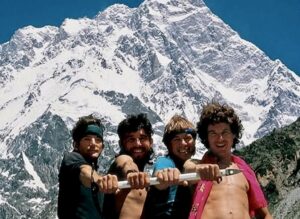There’s arguably no image of the American West more iconic than a Native American warrior astride a majestic horse, waiting to attack a vast herd of buffalo — or an unsuspecting caravan.
The depth of the relationship between Native Americans and their equine companions is one of the great stories of the New World. Yet pinpointing when Native Americans embraced these animals has largely remained open to debate. Many historians point to the 18th century as the beginning of this massive shift in Indigenous culture.
But new research published in Science this month offers a drastic update to that historical timeline. It argues that Native peoples gained access to horses a century earlier than previously thought.
Relying on a combination of archaeological evidence, radiocarbon dating, isotope analysis, and ancient DNA, the study’s authors concluded that horses spread quickly after the Spanish introduced them to the Southwest in the 16th century.
“It’s a really detailed, round, robust, multi-methodology way of looking at the data set that starts to define, from an archaeological perspective, when horses appear in the American West,” University of Oxford archaeologist Peter Mitchell, who was not involved with the research, told Science.org. “This paper totally changes the game.”

Free-range horses on Navajo land at Canyon de Chelly National Monument, Arizona. Photo: Shutterstock
An overlooked relationship
As with so much Native American history, the people’s relationship with horses has mostly been overlooked, as the transition occurred out of sight of Europeans.
Most historians had accepted the idea that the cultural transition to horses happened in a 50-year period after a 1680 revolt against the Spanish rule in New Mexico. The native Pueblo peoples sold thousands of horses after their uprising, sending a huge number to neighboring tribes.
Evidently, Western historians were perfectly content to accept the idea that horses changed Native economies, military strategies, and religions across the entire continent — within a half-century.
Yet Native Americans themselves told a different story of their own history. They suggested that horses arrived in their lands much earlier. That’s because the “oral tradition was discounted,” said Comanche historian Jimmy Arterberry, a co-author of the Science study.
“The end result has been to discredit the antiquity of the relationship between Native people and horses,” added University of Colorado archaeologist William Taylor, also a study co-author.
Horse-bone analysis upends the status quo
While many scientists will likely continue to dismiss oral traditions as evidence — carbon dating is harder to refute.
For starters, the study’s researchers looked at several horse bones found at a Puebloan village called Paa’ko. It was first settled in 1525 before it became a Spanish mission in 1650. It remained a mission until the Puebloans revolted in 1680.
Since the first excavation in the 1930s, scientists assumed the bones were the result of the Spanish colony. But when researchers used carbon dating in 2020, they discovered that the bones were at least 400 years old, possibly predating the first Spanish settlement in 1598.
The research team continued dating bones from sites across the Great Plains, and the results remained consistent: bones dated to a century earlier than historians had assumed possible. At one site in Wyoming, analysis of the bones of a six-month-old foal showed formations on its skull that suggest it was tethered, and a facial fracture from a horse kick. Those findings mean it was likely kept near other horses, and given veterinary care.
“People are going to have to go back into their collections and start re-dating horses,” said Shield Chief Gover, a member of the Pawnee tribe and a study co-author. “This is upending the status quo.”






